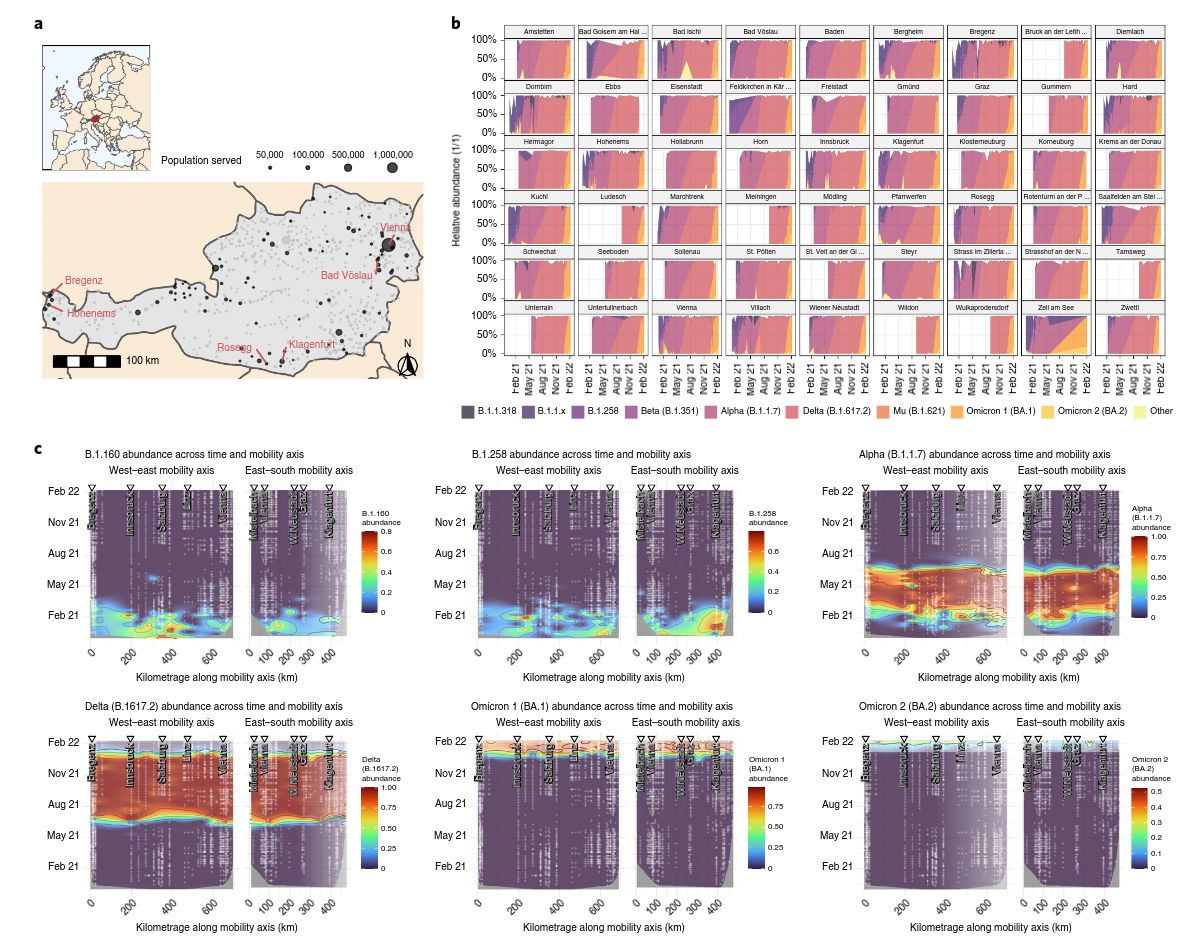New Paper Published in ''Nature Biotechnology''
Note: This is an automated translation (using DeepL) of the original German article.
First paper published in ‘‘Nature Biotechnology’’, second accepted by Nature’s ‘‘Communications Medicine’’
Since it is our concern not only to approach problems in a solution-oriented way, but also to work scientifically at the state of the art, we are very pleased that two publications have now been accepted or published by high-tier journals. Both papers are based on the work around the COVID-19 epidemic and are, as is now standard for large publications, the interdisciplinary product of highly qualified scientific partners.
Publication published in Nature Biotechnology.
The paper “Viral variant-resolved wastewater surveillance of SARS-CoV-2 at national scale” has been published in Nature Biotechnology. The paper describes how the analysis of wastewater from sewage treatment plants can be used to draw reliable conclusions, not only about the temporal and spatial spread of the SARS-CoV-2 virus (the trigger of COVID-19), but also about the number of infected persons and, above all, about the currently circulating virus strains.
Note:
The paper is on Nature Biotechnology behind a paywall. However, the preprint can be viewed and downloaded on medRxiv.
The paper, which was authored by 18 institutions and 39 authors, is about, among other things, the construction of an appropriate monitoring system for the sampling and evaluation of sewage water. The contribution of our team was the integration of mobility information, based on data from mobile phone operators, to track the movement of people between the catchment areas of wastewater treatment plants.
Building on the research results, we now plan to use the wastewater data to validate the rate of spread of the virus or epidemic in our agent-based model, leading to even more accurate and valid statements in the future.
Paper accepted by Communications Medicine.
The second paper “Supporting COVID-19 Policy-Making with a Predictive Epidemiological Multi-Model Warning System” was recently accepted by Communications Medicine, a journal in the Nature portfolio, pending publication. It addresses the development of a simulation-based COVID-19 early warning system for the Austrian federal government, for which the outcomes of three independent epidemiological models are consolidated in the Prognosis Consortium of the Federal Ministry of Social Affairs, Health, Care and Consumer Protection. The paper focuses on the three most important contributions of the system:
- when and where case numbers and hospital bed occupancy rates are expected to peak during epidemic waves,
- whether nonpharmaceutical interventions should be relaxed or strengthened, and
- how hospital operators can be given guidance for health care capacity planning.
